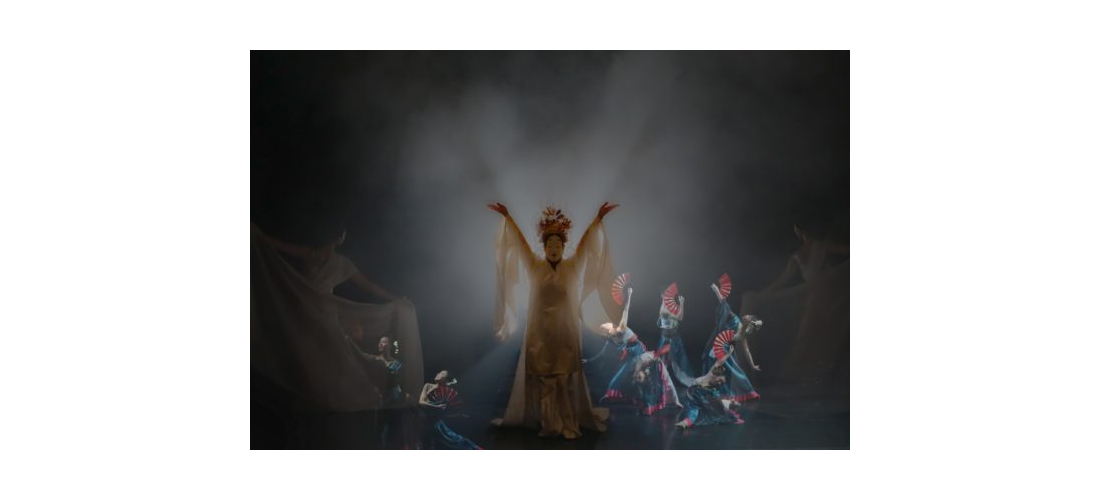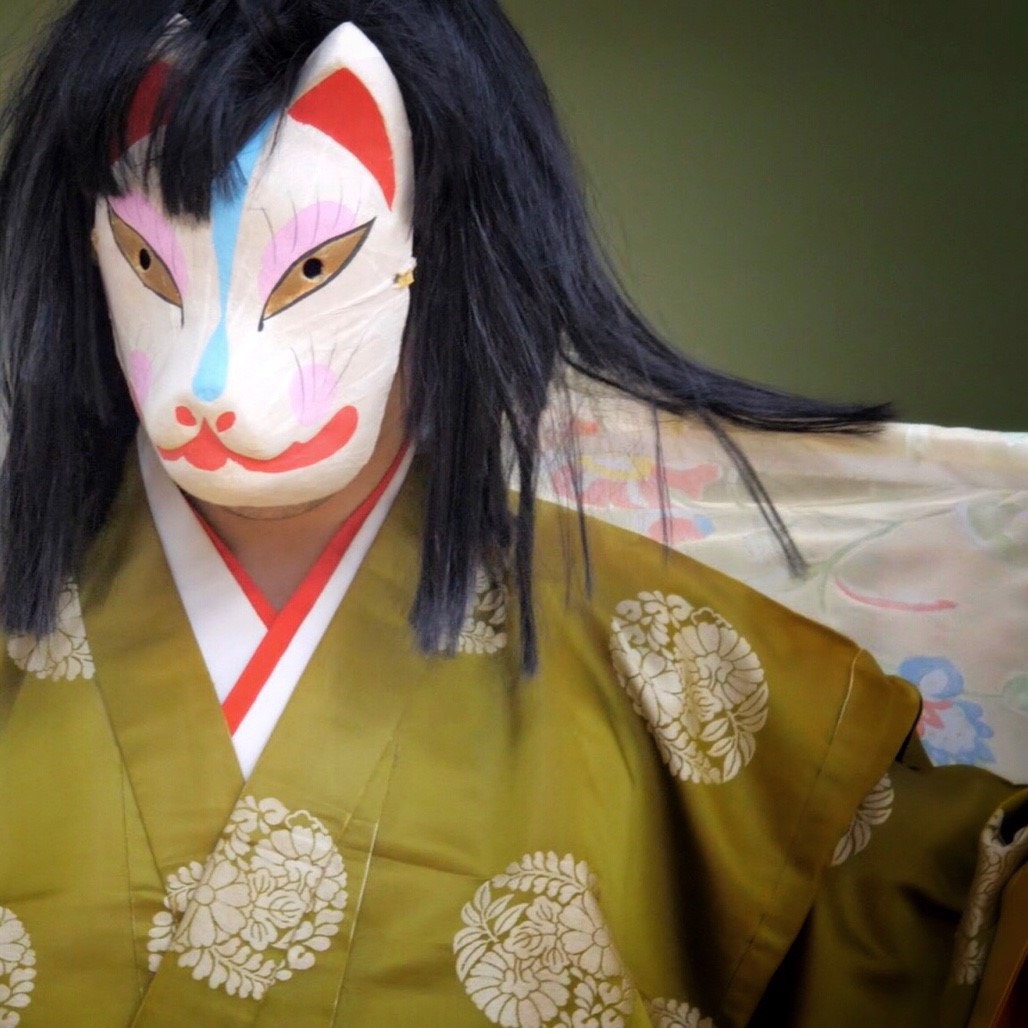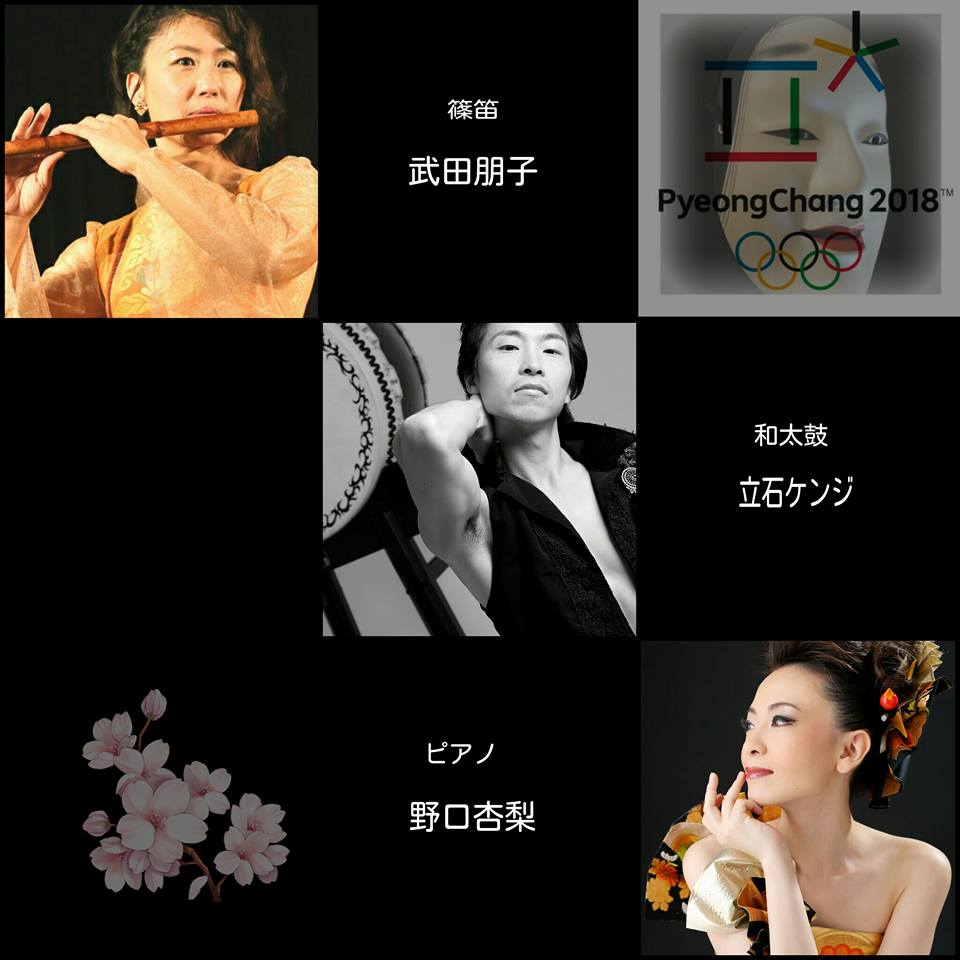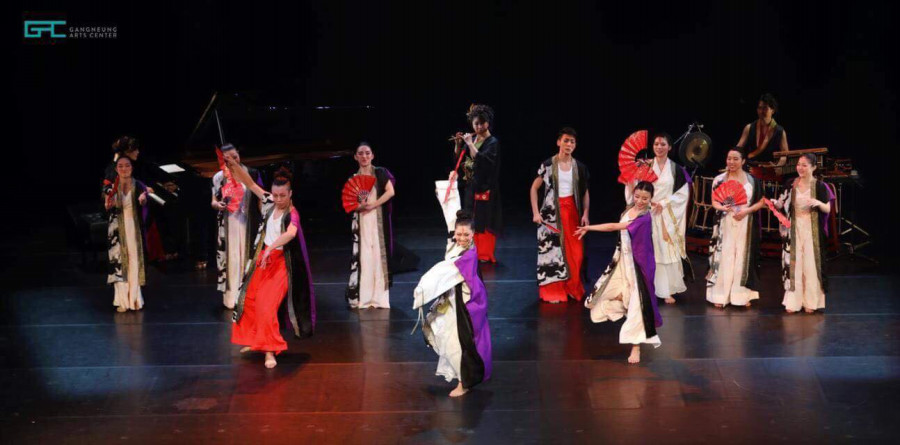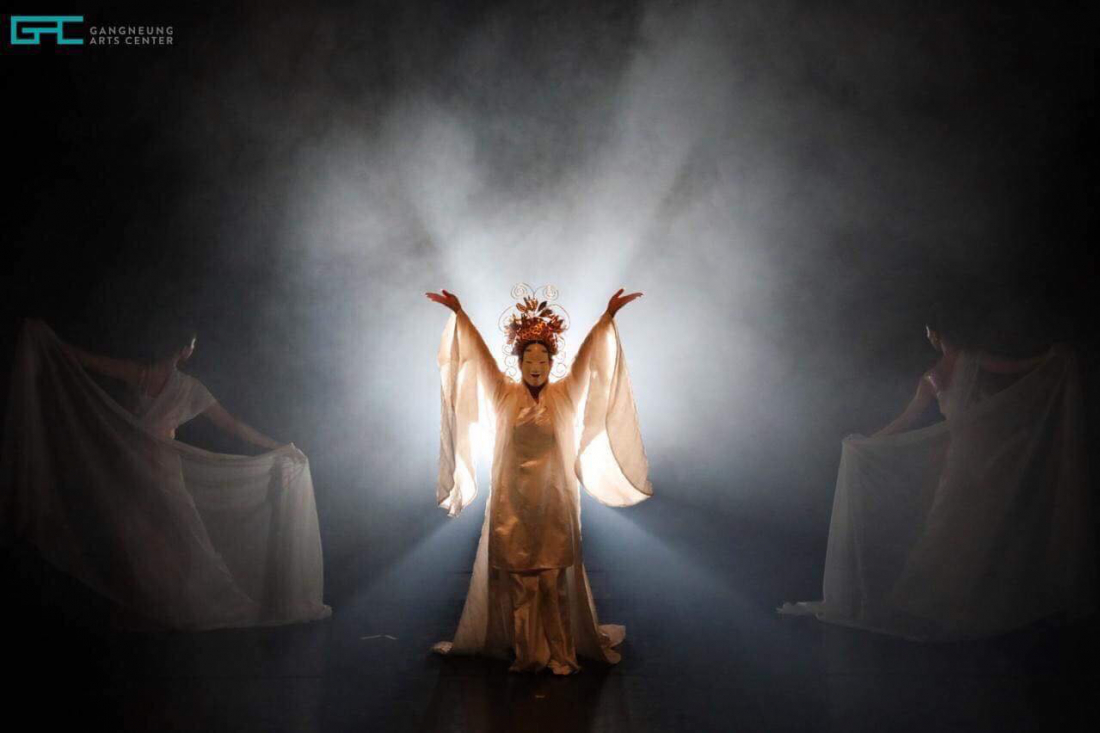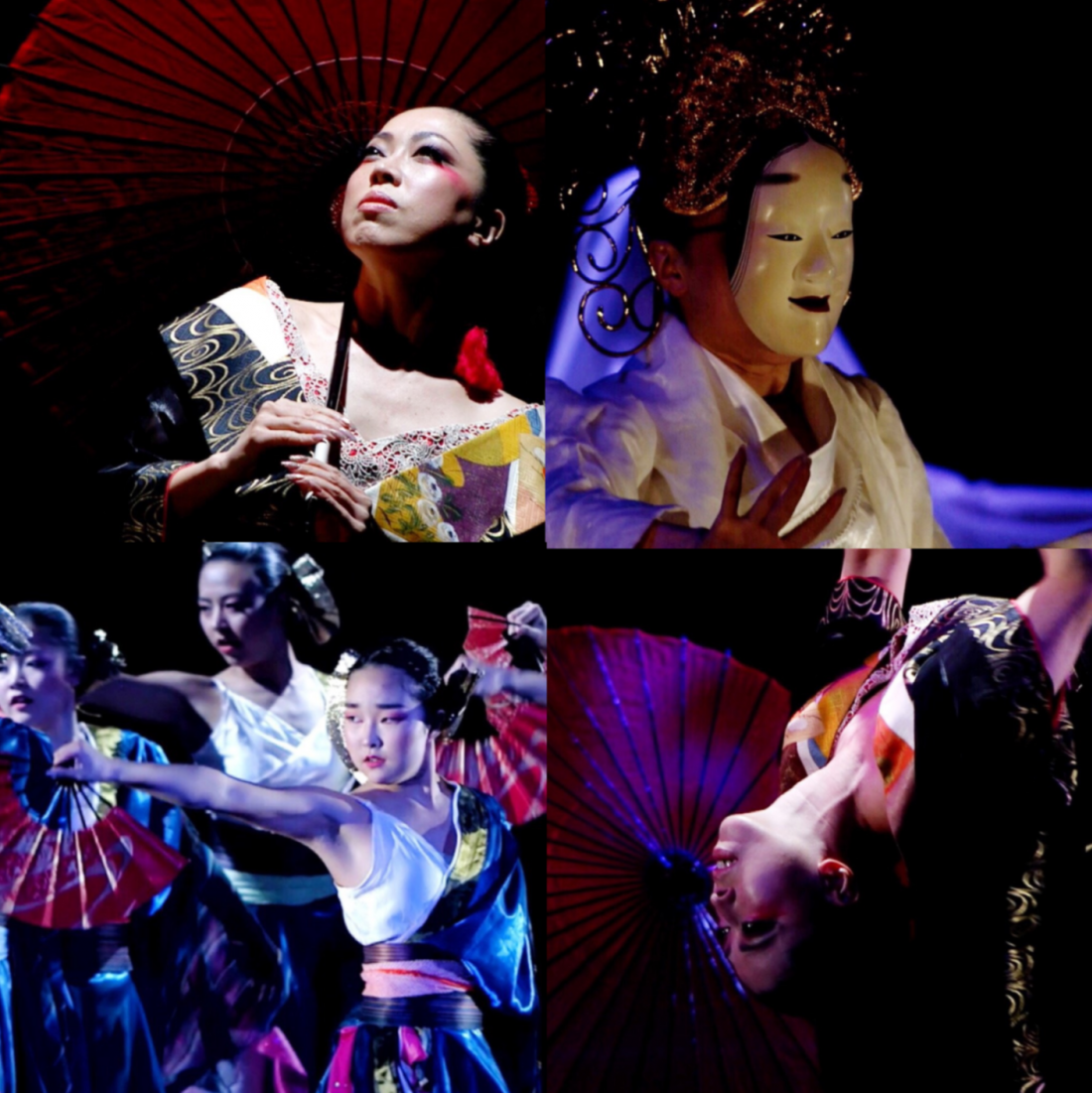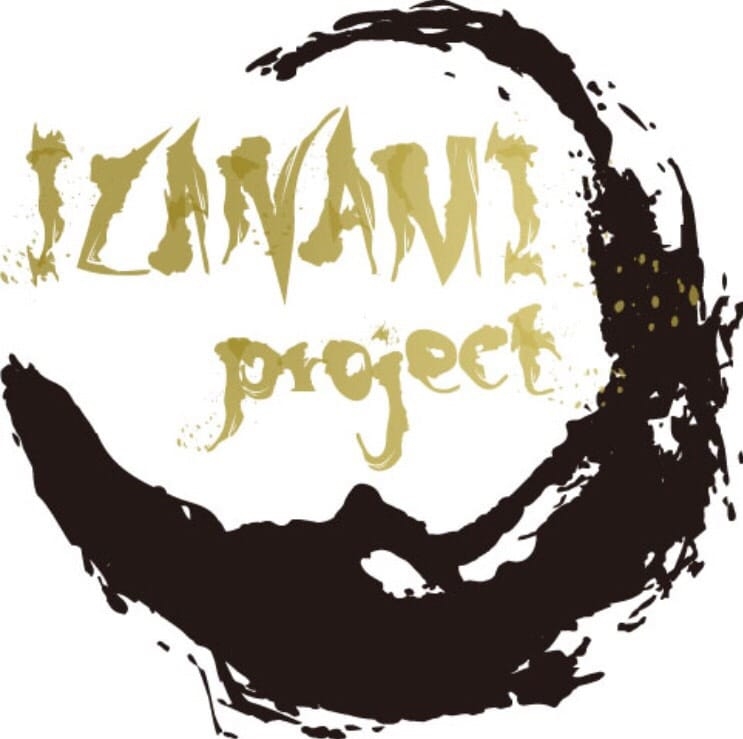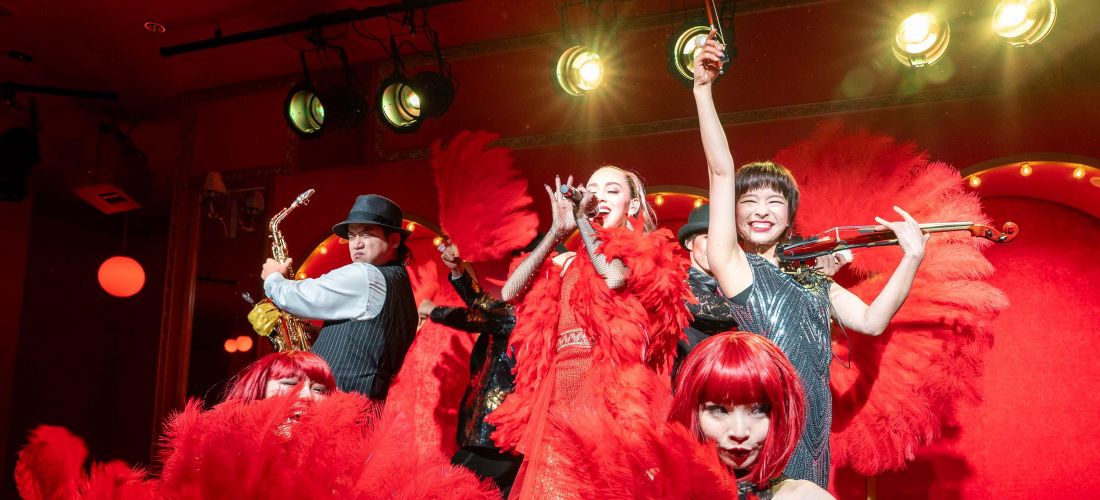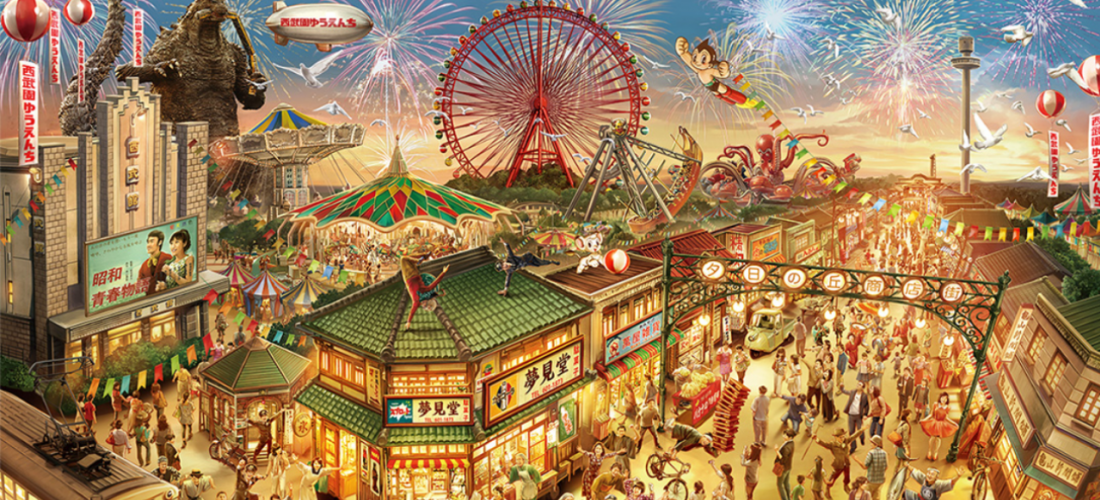CONTENTS
Traditional Noh Meets Modern Dance!
Taking those traditional dance styles and productions such as Noh and Kabuki and putting the modern dance spin on it. This is the IZANAMI project!
The Traditional Performance Arts: What are Noh and Kabuki?
Noh and Kabuki are ancient styles of Japanese stage performance arts, with them debuting around the 14th Century and 17th Century respectively. With Noh, the idea behind it was performing a story with a supernatural being or demigod becoming human and interacting with others. Kabuki was more a display of strange (but also skilled) dancers. A slightly interesting sidenote is that Kabuki was an adult male only performance art after female and young male kabuki performers being banned early on after its inception.
The IZANAMI project! Bringing Noh and Kabuki into the Future!
The IZANAMI project is a dance group that featured on the day of the PyeongChang Winter Olympics 2018 Opening Ceremony, as part of the festivities! Appearing at the Gangneung Arts Centre as part of the Cultural Olympics shows, the team of just 10 dancers and 3 musicians performed a quintessentially Japanese dance performance, showing off a taste of modern and traditional Japan in South Korea.
Appearing the day after the North Korean delegation on the same stage, this small group of dancers brought magic and mystery to the big stage. With amazing reviews being received from those that saw, the group has continued and have since their performance grown and created something a lot bigger than before!
The production mixes the highly stylized Noh and Kabuki traditional performances which focuses highly on masks and costumes to portray characters, with jazz and modern dance, which results in a rare blend of tradition and modern, something that after looking at cities such as Tokyo and Kyoto, you can realize Japan does exceedingly well!
Bringing [MIYABI] back to Japan
After such a successful show being held in South Korea, the IZANAMI project decided it was time to bring this blended traditional modern performance back to its cultural home, Japan. With this, they have decided to bring it for a one day only event, with two performances happening, one in the afternoon and one in the evening, held at one of the most famous auditoriums in Tokyo, Nihonbashi Koukadou (Nihonbashi Auditorium). It's also a location that is easy to get to from most places in Tokyo, which means not only Japanese people but those from overseas can go and watch and feel [Japan's beauty] on stage.
With this show, the production has evolved and the scale of the production has increased dramatically! The number of performers has also doubled with new roles and more instruments being brought in! The IZANAMI project searched all around Japan for these talented dancers and muscians, and in doing so they have created an amazing production that shouldn't be missed.
Crowdfunding Campaign
As a way to not only help pay for costume creation and so on, but to also be able to reach the world wide stage! The Izanami project, in giving an amazing Japanese dance performance which incorporates a lot of Japanese culture, wants to be able to send this out to the world! They wish not just for people coming to Japan on a sightseeing trip to see the production but they also wish for people to come to Japan with the explicit purpose of seeing this production! With rehersals on going and constant updates on their social media, it's not hard to see how hard they are preparing to create a performance to never forget!
You can find the crowdfunding project here: https://en.japankurufunding.com/projects/izanami-project/
Meanings behind the IZANAMI project name and the production’s name: MIYABI
The IZANAMI project's name is taken from Izanami no mikoto, one of the goddesses in Japanese mythology. One of the first goddesses in Japanese Mythology, She was the goddess of creation and death. With this original role of being the goddess of creation, the dance troupé have taken on this name and committed to created new types of dance productions!
The name of the production that they are putting on is MIYABI. Miyabi (雅) means grace or elegance in Japanese, and is therefore is a fitting name for such a production!
Information on the event
Production Name: MIYABI
Date & Location: Saturday 23rd March 2019 Nihonbashi Koukaido
Afternoon Performance: Doors Open: 13:00 / Start: 13:30
Evening Performance: Doors Open: 17;30 / Start: 18:00
Performers:
[Choreography・Dancer]
Chie Norie/ Mion Murase
[Dancer]
Miho Hikima/ Saya Watatani/ Kei Mizushima/ Nakako Kuroki/ Momoai Kojima/ Mio Kikuchi/ Asuna Ano/ Nana Watanuki/ Mai Kamiya/ Yuki Nakayama/ Marina Minami/ Runa Fujisato/ Hana Takeuchi
[Composer・Performers]
Yua Ishizuka (Japanese Taiko drum・Hand drum) / Tomoko Takeda (Shinobue・Noh Flute) / Takuya Morikawa (Violin・Keyboard)/ Anri Noguchi (Piano)
Where to get Tickets:
You can get tickets to see the performance via the crowdfunding campaign at Japankuru Funding. GO HERE to back the project and get tickets!!
How to get there:
Tokyo Metro
Hanzomon Line [Suitengumae] Station – From Exit 6: 2 mins walk
Hibiya Line [Ningyoucho] Station – From Exit A2: 5 mins walk
Touzai Line [Kayabacho] Station – From Exit 4A: 10 mins walk
Toei Underground Line
Asakusa Line [Ningyocho] Station – From Exit A3/A5: 7 mins walk
Chuo Ward Bus (Edo Bus)
Kitajunkan 25 [Nihonbashi Kuminkan Centre]
Hey everyone! We hope that we can help you keep up to date with all the projects and things we have going on over at Japankuru Funding! We hope that you find the projects on the site as interesting as we do!
COMMENT
FEATURED MEDIA
VIEW MORE 
A New Tokyo Animal Destination: Relax & Learn About the World’s Animals in Japan
#pr #japankuru #anitouch #anitouchtokyodome #capybara #capybaracafe #animalcafe #tokyotrip #japantrip #카피바라 #애니터치 #아이와가볼만한곳 #도쿄여행 #가족여행 #東京旅遊 #東京親子景點 #日本動物互動體驗 #水豚泡澡 #東京巨蛋城 #เที่ยวญี่ปุ่น2025 #ที่เที่ยวครอบครัว #สวนสัตว์ในร่ม #TokyoDomeCity #anitouchtokyodome

Shohei Ohtani Collab Developed Products & Other Japanese Drugstore Recommendations From Kowa
#pr #japankuru
#kowa #syncronkowa #japanshopping #preworkout #postworkout #tokyoshopping #japantrip #일본쇼핑 #일본이온음료 #오타니 #오타니쇼헤이 #코와 #興和 #日本必買 #日本旅遊 #運動補充能量 #運動飲品 #ช้อปปิ้งญี่ปุ่น #เครื่องดื่มออกกำลังกาย #นักกีฬา #ผลิตภัณฑ์ญี่ปุ่น #อาหารเสริมญี่ปุ่น

도쿄 근교 당일치기 여행 추천! 작은 에도라 불리는 ‘가와고에’
세이부 ‘가와고에 패스(디지털)’ 하나면 편리하게 이동 + 가성비까지 완벽하게! 필름카메라 감성 가득한 레트로 거리 길거리 먹방부터 귀여움 끝판왕 핫플&포토 스폿까지 총집합!
Looking for day trips from Tokyo? Try Kawagoe, AKA Little Edo!
Use the SEIBU KAWAGOE PASS (Digital) for easy, affordable transportation!
Check out the historic streets of Kawagoe for some great street food and plenty of picturesque retro photo ops.
#pr #japankuru #도쿄근교여행 #가와고에 #가와고에패스 #세이부패스 #기모노체험 #가와고에여행 #도쿄여행코스 #도쿄근교당일치기 #세이부가와고에패스
#tokyotrip #kawagoe #tokyodaytrip #seibukawagoepass #kimono #japantrip

Hirakata Park, Osaka: Enjoy the Classic Japanese Theme Park Experience!
#pr #japankuru #hirakatapark #amusementpark #japantrip #osakatrip #familytrip #rollercoaster #retrôvibes #枚方公園 #大阪旅遊 #關西私房景點 #日本親子旅行 #日本遊樂園 #木造雲霄飛車 #히라카타파크 #สวนสนุกฮิราคาตะพาร์ค

🍵Love Matcha? Upgrade Your Matcha Experience With Tsujiri!
・160년 전통 일본 말차 브랜드 츠지리에서 말차 덕후들이 픽한 인기템만 골라봤어요
・抹茶控的天堂!甜點、餅乾、飲品一次滿足,連伴手禮都幫你列好清單了
・ส่องมัทฉะสุดฮิต พร้อมพาเที่ยวร้านดังในอุจิ เกียวโต
#pr #japankuru #matcha #matchalover #uji #kyoto #japantrip #ujimatcha #matchalatte #matchasweets #tsujiri #말차 #말차덕후 #츠지리 #교토여행 #말차라떼 #辻利抹茶 #抹茶控 #日本抹茶 #宇治 #宇治抹茶 #日本伴手禮 #抹茶拿鐵 #抹茶甜點 #มัทฉะ #ของฝากญี่ปุ่น #ชาเขียวญี่ปุ่น #ซึจิริ #เกียวโต

・What Is Nenaito? And How Does This Sleep Care Supplement Work?
・你的睡眠保健品——認識「睡眠茶氨酸錠」
・수면 케어 서플리먼트 ‘네나이토’란?
・ผลิตภัณฑ์เสริมอาหารดูแลการนอน “Nenaito(ネナイト)” คืออะไร?
#pr #japankuru #sleepcare #japanshopping #nenaito #sleepsupplement #asahi #睡眠茶氨酸錠 #睡眠保健 #朝日 #l茶胺酸 #日本藥妝 #日本必買 #일본쇼핑 #수면 #건강하자 #네나이토 #일본영양제 #อาหารเสริมญี่ปุ่น #ช้อปปิ้งญี่ปุ่น #ร้านขายยาญี่ปุ่น #ดูแลตัวเองก่อนนอน #อาซาฮิ

Japanese Drugstore Must-Buys! Essential Items from Hisamitsu® Pharmaceutical
#PR #japankuru #hisamitsu #salonpas #feitas #hisamitsupharmaceutical #japanshopping #tokyoshopping #traveltips #japanhaul #japantrip #japantravel

Whether you grew up with Dragon Ball or you just fell in love with Dragon Ball DAIMA, you'll like the newest JINS collab. Shop this limited-edition Dragon Ball accessory collection to find some of the best Dragon Ball merchandise in Japan!
>> Find out more at Japankuru.com! (link in bio)
#japankuru #dragonball #dragonballdaima #animecollab #japanshopping #jins #japaneseglasses #japantravel #animemerch #pr

This month, Japankuru teamed up with @official_korekoko to invite three influencers (originally from Thailand, China, and Taiwan) on a trip to Yokohama. Check out the article (in Chinese) on Japankuru.com for all of their travel tips and photography hints - and look forward to more cool collaborations coming soon!
【橫濱夜散策 x 教你怎麼拍出網美照 📸✨】
每次來日本玩,是不是都會先找旅日網紅的推薦清單?
這次,我們邀請擁有日本豐富旅遊經驗的🇹🇭泰國、🇨🇳中國、🇹🇼台灣網紅,帶你走進夜晚的橫濱!從玩樂路線到拍照技巧,教你怎麼拍出最美的夜景照。那些熟悉的景點,換個視角說不定會有新發現~快跟他們一起出發吧!
#japankuru #橫濱紅磚倉庫 #汽車道 #中華街 #yokohama #japankuru #橫濱紅磚倉庫 #汽車道 #中華街 #yokohama #yokohamaredbrickwarehouse #yokohamachinatown

If you’re a fan of Vivienne Westwood's Japanese designs, and you’re looking forward to shopping in Harajuku this summer, we’ve got important news for you. Vivienne Westwood RED LABEL Laforet Harajuku is now closed for renovations - but the grand reopening is scheduled for July!
>> Find out more at Japankuru.com! (link in bio)
#japankuru #viviennewestwood #harajuku #omotesando #viviennewestwoodredlabel #viviennewestwoodjapan #비비안웨스트우드 #오모테산도 #하라주쿠 #日本購物 #薇薇安魏斯伍德 #日本時尚 #原宿 #表參道 #japantrip #japanshopping #pr

Ready to see TeamLab in Kyoto!? At TeamLab Biovortex Kyoto, the collective is taking their acclaimed immersive art and bringing it to Japan's ancient capital. We can't wait to see it for ourselves this autumn!
>> Find out more at Japankuru.com! (link in bio)
#japankuru #teamlab #teamlabbiovortex #kyoto #kyototrip #japantravel #artnews
Photos courtesy of teamLab, Exhibition view of teamLab Biovortex Kyoto, 2025, Kyoto ® teamLab, courtesy Pace Gallery

Japanese Makeup Shopping • A Trip to Kamakura & Enoshima With Canmake’s Cool-Toned Summer Makeup
#pr #canmake #enoshima #enoden #에노시마 #캔메이크 #japanesemakeup #japanesecosmetics

⚔️The Robot Restaurant is gone, but the Samurai Restaurant is here to take its place. Check it out, and don't forget your coupon!
🍣신주쿠의 명소 로봇 레스토랑이 사무라이 레스토랑으로 부활! 절찬 쿠폰 발급중
💃18歲以上才能入場的歌舞秀,和你想的不一樣!拿好優惠券去看看~
#tokyo #shinjuku #samurairestaurant #robotrestaurant #tokyotrip #도쿄여행 #신주쿠 #사무라이레스토랑 #이색체험 #할인이벤트 #歌舞伎町 #東京景點 #武士餐廳 #日本表演 #日本文化體驗 #japankuru #japantrip #japantravel #japanlovers #japan_of_insta

Japanese appliance & electronics shopping with our KOJIMA x BicCamera coupon!
用JAPANKURU的KOJIMA x BicCamera優惠券買這些正好❤️
코지마 x 빅 카메라 쿠폰으로 일본 가전 제품 쇼핑하기
#pr #japankuru #japanshopping #kojima #biccamera #japaneseskincare #yaman #dji #osmopocket3 #skincaredevice #日本購物 #美容儀 #相機 #雅萌 #日本家電 #일본여행 #면세 #여행꿀팁 #일본쇼핑리스트 #쿠폰 #일본쇼핑 #일본브랜드 #할인 #코지마 #빅카메라 #japankurucoupon

